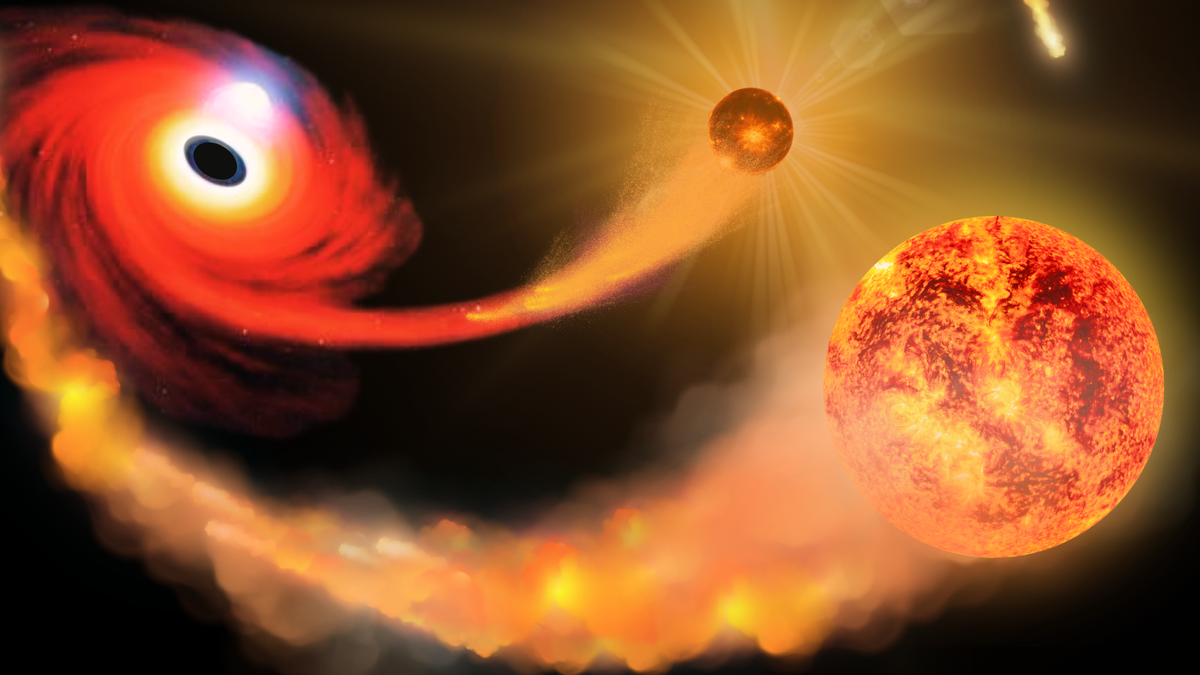Get the latest Science News and Discoveries
TESS discovers rocky exoplanet (BD+05 4868Ab) orbiting so close to its star that its minerals evaporate, creating a comet-like tail [arxiv pre-print]
We report the discovery of BD+05$\,$4868$\,$Ab, a transiting exoplanet orbiting a bright ($V=10.16$) K-dwarf (TIC 466376085) with a period of 1.27 days. Observations from NASA's Transiting Exoplanet Survey Satellite (TESS) reveal variable transit depths and asymmetric transit profiles that are characteristic of comet-like tails formed by dusty effluents emanating from a disintegrating planet. Unique to BD+05$\,$4868$\,$Ab is the presence of prominent dust tails in both the trailing and leading directions that contribute to the extinction of starlight from the host star. By fitting the observed transit profile and analytically modeling the drift of dust grains within both dust tails, we infer large grain sizes ($\sim1-10\,μ$m) and a mass loss rate of $10\,M_{\rm \oplus}\,$Gyr$^{-1}$, suggestive of a lunar-mass object with a disintegration timescale of only several Myr. The host star is probably older than the Sun and is accompanied by an M-dwarf companion at a projected physical separation of 130 AU. The brightness of the host star, combined with the planet's relatively deep transits ($0.8-2.0\%$), presents BD+05$\,$4868$\,$Ab as a prime target for compositional studies of rocky exoplanets and investigations into the nature of catastrophically evaporating planets.
None
Or read this on r/Space

